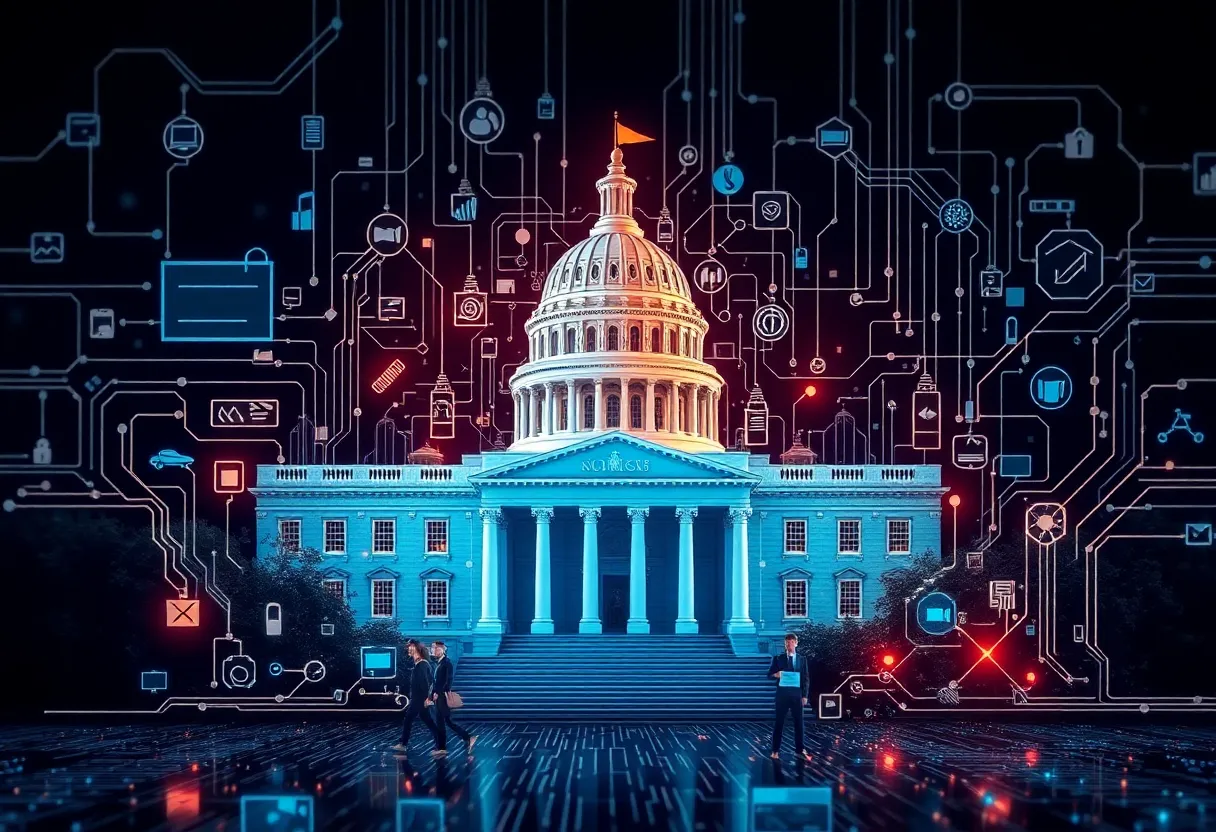

An abstract concept of government efficiency and the role of technology in federal spending.
President Trump signed an executive order enhancing the Department of Government Efficiency (DOGE), led by Elon Musk, to scrutinize federal spending. This initiative aims to cut costs and improve efficiency across various agencies. However, it has faced backlash, with significant resignations among civil servants citing concerns over qualification and security risks. Musk dismisses the resignations as ‘fake news,’ while agency leaders struggle to balance compliance with DOGE directives and the integrity of their operations. The outcome of these changes remains uncertain as challenges persist.
In a surprising turn of events, President Donald Trump put pen to paper on an executive order this past Wednesday that ramps up the power of the Department of Government Efficiency—fondly known as DOGE—to dig deeper into federal agency spending. This new order seems to be a clear nod to tech mogul Elon Musk, who is quickly making waves in federal governance.
With this executive order, the agency’s champion, Musk, now holds greater authority to bring about cost-cutting measures across various federal agencies. The order is part of a broader ambition to enhance efficiency and ensure taxpayer dollars are being utilized effectively. It comes just over a month into Trump’s new term, during which Musk has been on a mission to reshape the federal landscape.
The crux of the order mandates that federal agencies team up with a leader from DOGE to scrutinize contracts and grants. The ultimate goal? To cut unnecessary spending or adjust contracts “where appropriate.” Sounds like a plan to keep Uncle Sam’s wallet a bit tighter!
As you might expect, this bold move hasn’t come without pushback. Early reports indicate that more than 20 civil service employees decided to resign from the DOGE team, citing serious concerns about the impact on essential public services. Their resignation highlighted fears surrounding being replaced by political appointees—often seen as less qualified—living in Musk’s orbit.
Included in this wave of resignations were individuals hailing from prestigious tech companies like Google and Amazon, who had previously committed to public service and now found themselves caught in a tug-of-war between innovation and tradition.
Interviews with these resigning employees revealed heightened worries regarding security risks. Many expressed that interviews were being conducted by individuals lacking necessary training or driven by political motives—all in the name of efficiency. This has sparked quite the debate over the direction in which Musk wants to lead federal employment.
In addition to resignations, the federal workforce has already seen notable layoffs, with around 40 staffers let go in recent weeks. Many of these departed employees were key players responsible for maintaining critical technology services across government systems.
Despite these developments, White House Press Secretary Karoline Leavitt brushed off concerns about the mass resignation, insisting it’s just a bump on the road to Trump’s vision of an efficient government. In fact, she assured the public that such moves would not hinder the efficiency goals being set forth.
Meanwhile, Musk has labeled the stories of mass resignations as nothing more than “fake news,” suggesting that the departing employees were merely “Dem political holdovers.” It’s clear there’s a divide forming as both Musk and agency leaders navigate the turbulent waters of federal job security against the backdrop of efficiency mandates.
In an added layer to this unfolding saga, at least a dozen federal agencies are reportedly at odds with Musk’s directives. And what’s more, some agency heads are walking a tightrope, trying to balance compliance with DOGE mandates while protecting their staff and the integrity of their agency functions.
With such pronounced changes afoot, it remains to be seen how this new authority granted to DOGE will impact federal employment and essential services. Legal hurdles over Musk’s plans for systematic change loom as challenges are emerging surrounding the legality of such massive shifts in governance.
The situation is undoubtedly fluid, and all eyes are on Musk and his initiatives as he takes a structural scalpel to the workings of the federal government. Whether this leads to a more efficient government or a chaotic transition remains to be seen.
News Summary On a normal Thursday evening, an Amtrak train struck three family members in…
News Summary In a significant development, GOP Representative Anna Paulina Luna is advocating for remote…
News Summary A Michigan couple, Paul and Christy Akeo, spent nearly a month in a…
News Summary Communities from Kentucky to Missouri are reeling from a devastating tornado outbreak that…
News Summary The Trump administration has fired General Timothy Haugh, the director of the NSA,…
News Summary The annual CORK wine festival in Shreveport has been rescheduled to April 6,…